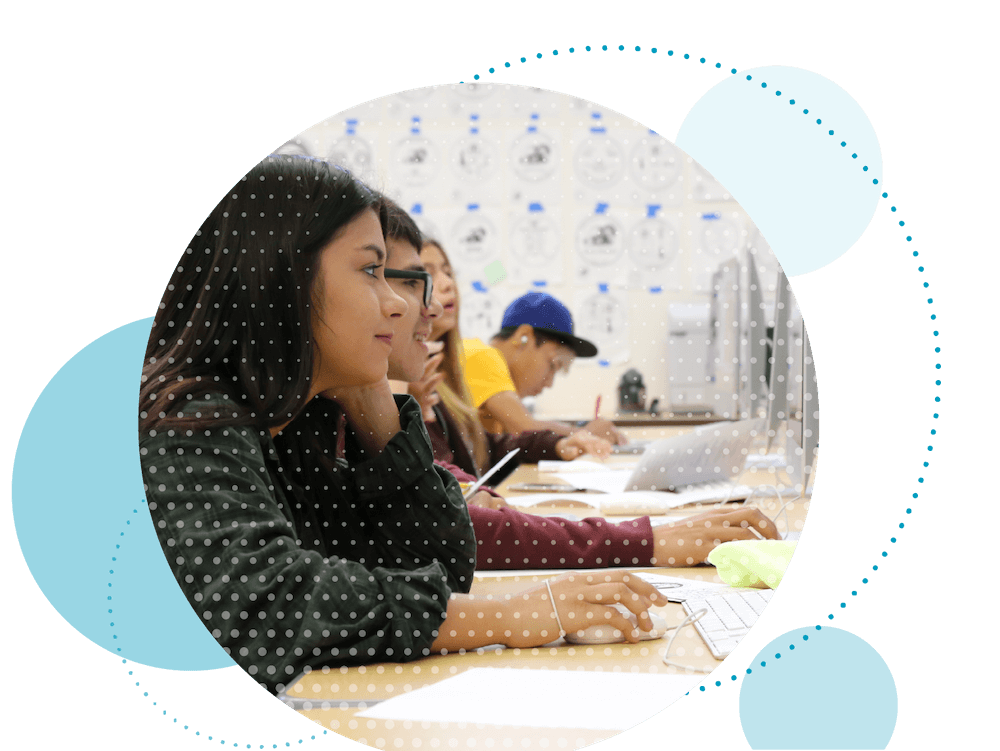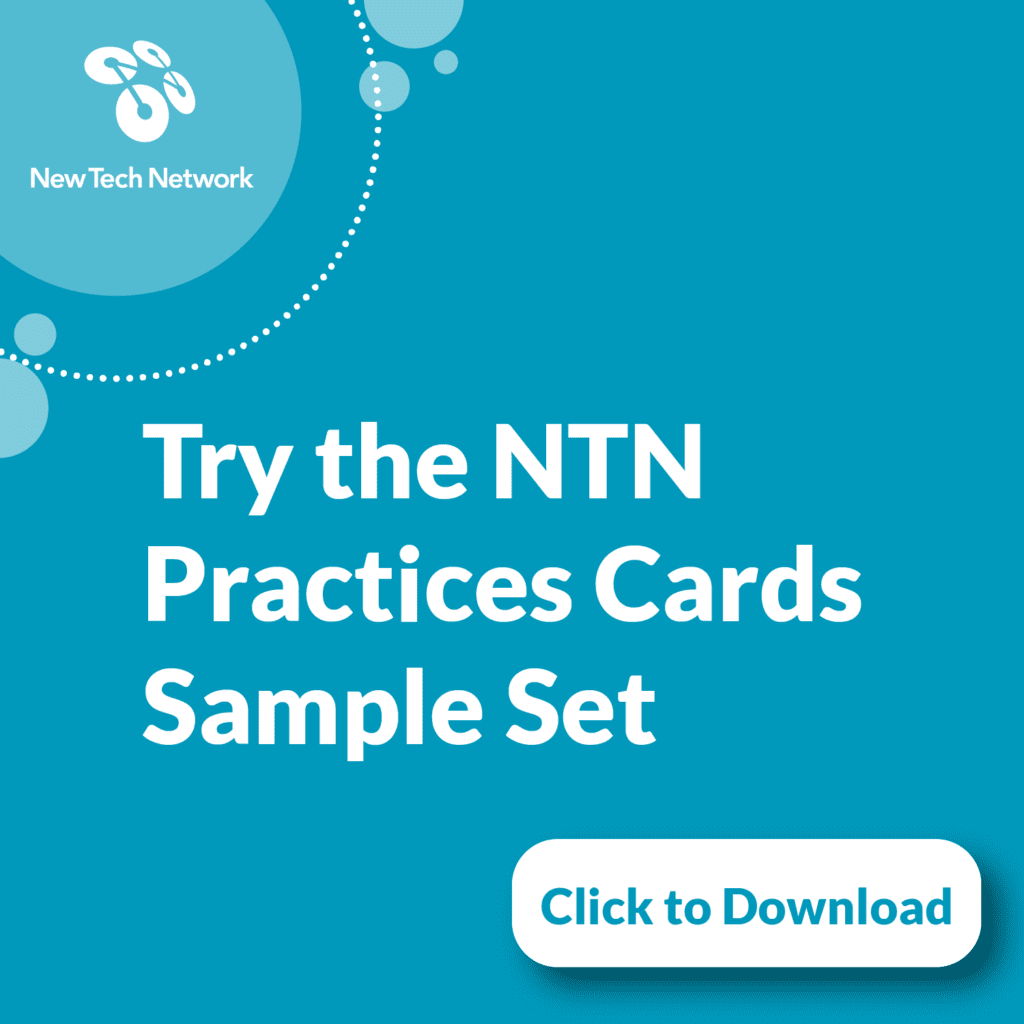Our Network
Resources and Tools
How to Implement Student-Centered Learning Teaching Strategies in the Classroom
What are Student Centered Learning Teaching Methods
There is a resounding call for an educational approach grounded in student autonomy and a shift towards learner-centered education more than ever. The pandemic highlighted the shortcomings of traditional methods and the urgency for a student-centered education system is imperative for fostering engaged and empowered learners prepared for the skills needed for future careers.
Despite being a departure from the conventional school setting, a student-centered approach to teaching doesn’t sideline the role of the teacher. Instead, the teacher serves as a guide, offering instructions, acting as a facilitator for collaborative discourse, student-led problem solving, and providing feedback as necessary.
Project-based learning (PBL) and Problem-based learning (PrBL) have always been at the heart of implementing student-centered teaching and learning, allowing students to take control of the learning process. In contrast to teacher-led instruction, PBL encourages student engagement, collaboration, critical thinking, and problem-solving. This empowers students to engage in active learning. PBL helps students take ownership of material in creative and culturally relevant ways, experience it in context, and share their learning with peers. Students offer feedback to one another, and utilize the instructor as a valuable resource and support when needed.
To learn more about PBL and PrBL refer to the articles: The Comprehensive Guide to Project-Based Learning: Empowering Student Choice through an Effective Teaching Method and Project-Based vs. Problem-Based Learning: Which is Right for Your Classroom?
While New Tech Network has maintained that the PBL and PrBL pedagogy are critical and valuable paths towards the cultivation of equitable, student-centered environments, there are also ways to create a student-centered classroom outside of PBL that will be shared in this article.
What are the Benefits of Student Centered Learning Teaching Methods
There are many benefits to creating a student-centered learning environment. Ultimately, the most obvious benefits are increased student engagement and stronger relationships with teachers and peers. Gorski states in Reaching and Teaching Students in Poverty that “low-income students disproportionately are subject to the most rote, least engaging, lowest-expectation teaching… Low-income students, like all students, learn best when we teach in student-centered ways that emphasize deep engagement and higher-order learning” (Gorski 2013). New Tech Network believes that all students deserve access to joyful, meaningful, and relevant educational experiences.
When school communities actively commit to student-centered instruction, they engage students in authentic complex thinking and problem-solving, emphasize equitable collaboration and foster self-directed learning and autonomy. Research shows that students grasp core concepts with increased engagement when they can see direct application of what they are learning (National Research Council 2000).
Strategies and implementation in the classroom
There are several learning strategies one can implement to create a student centered environment. New Tech Network’s Four Focus Areas support the cultivation of a student-centered and equitable learning environments. The NTN Focus areas are: Meaningful and Equitable Instruction, Supportive and Inclusive Culture, Purposeful Assessment, and College and Career Ready Outcomes. This section outlines how each Focus Area helps to cultivate a student-centered learning environment:
Meaningful and Equitable Instruction
![]() NTN’s Focus Area of Meaningful and Equitable Instruction, centers the instructional approach on authentic, complex thinking and problem-solving. Based on experience, high-quality, relevant PBL is the best way for students to experience deep, contextual, shared learning, as well as, acquire and demonstrate proficiency in college and career ready outcomes. Schools can implement Learner-Centered Practices in silo or in tandem with PBL. NTN created a set of Learner-Centered Practices Cards for the purpose of scaffolding within project or as stand alone strategies that create a learner-centered environment outside of PBL. Each of the Learner-Centered Practices reflects an underlying shift in the way learners and facilitators cultivate their day-to-day instruction.
NTN’s Focus Area of Meaningful and Equitable Instruction, centers the instructional approach on authentic, complex thinking and problem-solving. Based on experience, high-quality, relevant PBL is the best way for students to experience deep, contextual, shared learning, as well as, acquire and demonstrate proficiency in college and career ready outcomes. Schools can implement Learner-Centered Practices in silo or in tandem with PBL. NTN created a set of Learner-Centered Practices Cards for the purpose of scaffolding within project or as stand alone strategies that create a learner-centered environment outside of PBL. Each of the Learner-Centered Practices reflects an underlying shift in the way learners and facilitators cultivate their day-to-day instruction.
Shift #1: From a Teacher-Centered approach to a Learner-Centered approach: In this shift the focus changes to building the learning partnership between teachers and students. The practices curated in the card set cultivate a learning environment where communities take ownership of their learning and center the instructional approach on authentic, complex thinking, and problem-solving.
Shift #2: Applying Culturally Sustaining Approaches: The practices curated in the card set encourage opportunities to extend and build students’ knowledge, skills, and mindsets – including their ability to critically examine systems (and system inequities) and engage in positive change.
Supportive and Inclusive Culture
![]() NTN’s Focus Area of Supportive and Inclusive Culture fosters a school-wide culture of belonging, care, community, and growth for adults and students. This type of culture helps ensure that students and teachers alike have ownership over the learning experience and school environment. In order to build a student-centered classroom students must feel safe, supported and valued as a contributing member of the classroom community. Not only do relationships between student and teacher need to be a priority but also peer to peer relationships must be cultivated.
NTN’s Focus Area of Supportive and Inclusive Culture fosters a school-wide culture of belonging, care, community, and growth for adults and students. This type of culture helps ensure that students and teachers alike have ownership over the learning experience and school environment. In order to build a student-centered classroom students must feel safe, supported and valued as a contributing member of the classroom community. Not only do relationships between student and teacher need to be a priority but also peer to peer relationships must be cultivated.
Knowing that learner-centered environments lean heavily on a supportive and inclusive classroom and school culture, NTN created a set of Culture Practices Cards which are grouped in the set by these key shifts:
Shift #1: Adopt an Asset-Based Mindset
Shift #2: Cultivate a Learning Community
Shift #3: Engage in Restorative Discipline
Shift #4: Support Social-Emotional Well-Being
Purposeful Assessment
![]() NTN’s Focus Area of Purposeful Assessment cultivates shared, school-wide understandings of equitable, purposeful assessment and grading strategies that inform teacher instruction, emphasize individual student growth, and demonstrate progress towards college and career readiness.
NTN’s Focus Area of Purposeful Assessment cultivates shared, school-wide understandings of equitable, purposeful assessment and grading strategies that inform teacher instruction, emphasize individual student growth, and demonstrate progress towards college and career readiness.
Creating learner-centered environments must include purposeful assessment therefore, NTN created a set of Assessment Practices Cards that provide support for educators and reflect an underlying shift in the way students and teachers approach assessment:
Shift #1: Focus on Feedback
Shift #2: Assess for Learning
Shift #3: Grade for Equity
Shift #4: Routinely Calibrate Assessments to Inform Instruction
Shift #5: Prioritize Performance Assessment
College and Career Ready Outcomes
![]() NTN’s Focus Area of College and Career Ready Outcomes prepare each student for postsecondary success with the knowledge, skills, and mindsets to be ready for college and career. The NTN Learning Outcomes of Collaboration, Knowledge and Thinking, Written Communication, Oral Communication, and Agency are a set of research-based outcomes aimed at preparing students for postsecondary college and career success.
NTN’s Focus Area of College and Career Ready Outcomes prepare each student for postsecondary success with the knowledge, skills, and mindsets to be ready for college and career. The NTN Learning Outcomes of Collaboration, Knowledge and Thinking, Written Communication, Oral Communication, and Agency are a set of research-based outcomes aimed at preparing students for postsecondary college and career success.
Student-Centered Learning Classroom Practices
In order to cultivate a student-centered classroom its helpful to have a plan for design and structure for support. As stated before, implementing PBL is a well known way to cultivate a student-centered classroom. Through PBL, students work to be active participants in their own learning journey and practice skills that are necessary in the real-world. PBL does take time to design and implement, while smaller student-centered practices may be an on-ramp to reaching the same goal. Meaningful learning experiences that are active and student-centered, increase engagement by providing opportunities for students to be active sense-makers, rather than passive recipients of knowledge. Learners better understand and apply new concepts through interactive, student-centered learning (Pellegrino & Hilton, 2012).
Below are a few NTN Practices Cards that are examples of student-centered teaching strategies:
Learner-Centered Practices
 Learning activities with students at the center, can take different forms in how they might be implemented but all have the same aim. NTN Learner-Centered Practices encourage equitable collaboration and discourse, idea generation, diverse voices and perspectives, complex thinking and problem solving. Two examples of NTN’s Learner-Centered Practices Cards (which can be downloaded here) are:
Learning activities with students at the center, can take different forms in how they might be implemented but all have the same aim. NTN Learner-Centered Practices encourage equitable collaboration and discourse, idea generation, diverse voices and perspectives, complex thinking and problem solving. Two examples of NTN’s Learner-Centered Practices Cards (which can be downloaded here) are:
- Chalk Talk: Allows students to articulate, expand on, and revise their knowledge, helps students brainstorm and use written communication skills to connect with and gain insights from each other.
- Card Sort: Is a hands on way to give space for students to provide their own reasonings, promotes self assessment and can also serve as a formative assessment.
These versatile practices can be used to introduce new material instead of lecture or direct instruction. They can also be used as formative assessment, a way to review material, or an optional activity for remediation.
Culture Practices
 In a student-centered environment all students must feel supported and included. They must feel safe in the idea that their voice matters and they can contribute to the overall community. This type of culture is foundational so that students can embrace equitable collaboration, discourse, higher order thinking that they are asked to do in a student-centered environment. Two of NTN’s Culture Practices Cards (which can be downloaded here) are:
In a student-centered environment all students must feel supported and included. They must feel safe in the idea that their voice matters and they can contribute to the overall community. This type of culture is foundational so that students can embrace equitable collaboration, discourse, higher order thinking that they are asked to do in a student-centered environment. Two of NTN’s Culture Practices Cards (which can be downloaded here) are:
- Co-Create Community Agreements: Can generate active cooperation, collective sense-making and equitable inclusion of voices. Ensuring each and every student has an opportunity to co-create shared processes for engaging in learning is a key component to equitable learning environments.
- Community Circles: A ritual and routine that involves learners collectively connecting, reflecting, and developing social and emotional learning skills. When used routinely, community circles support the cultivation of belonging, care and community within a learning environment.
In order for a student-centered approach to learning to occur, culture practices like these are required to create the kind of classroom community that is supportive and inclusive for all students.
Assessment Practices
 In a student centered environment, all students share responsibility in their own learning. This takes on many forms including allowing students to give and receive feedback so that reflection and revision on their work can occur. A classroom that is student-centered uses assessment to inform instruction and emphasize learner growth and intrinsic motivation. And lastly, student-centered assessment prioritizes asset-based feedback to further build on learner strengths and support growth in critical thinking skills over time. Two examples of NTN’s Assessment Practices Cards (which can be downloaded here) are:
In a student centered environment, all students share responsibility in their own learning. This takes on many forms including allowing students to give and receive feedback so that reflection and revision on their work can occur. A classroom that is student-centered uses assessment to inform instruction and emphasize learner growth and intrinsic motivation. And lastly, student-centered assessment prioritizes asset-based feedback to further build on learner strengths and support growth in critical thinking skills over time. Two examples of NTN’s Assessment Practices Cards (which can be downloaded here) are:
Running Rubrics: Using a rubric to capture conversations about progress helps students understand criteria for the task and what next steps they might take so that students take charge of their own learning. Running Rubrics also help students who are working towards mastery, take action on feedback in a project or assignment.
I used to think…Now I think: A formative assessment that helps students reflect on their thinking about a topic and explore how it has changed and encourages students to develop their reasoning abilities.
Future of Student-Centered Learning
In conclusion, the call for increased student autonomy and a shift towards learner-centered education has never been more important. Traditional learning models have been challenged, revealing the urgency for a transformative approach that equips students with the skills essential for the 21st century. Greater student engagement and strengthened teacher-student and peer relationships are some of the many benefits to student-centered learning. The student-centered approach ensures that students actively participate in authentic, complex thinking and problem-solving, fostering self-directed learning and autonomy. Embracing student-centered practices and culturally sustaining practices, such as those outlined in New Tech Network’s Practices Cards, proves instrumental in cultivating an equitable learning environment. In short, student-centered learning not only prepares students for real-world challenges but also cultivates lifelong learners equipped with the knowledge, skills, and attributes necessary for success in their future. To learn how to implement the practices shared in this article, check out our services for Learner-Centered Practices.
Work cited:
Gorski, P. (2018). Reaching and teaching students in poverty: strategies for erasing the opportunity gap. Second edition. New York, NY, Teachers College Press.
National Research Council. 2000. How People Learn: Brain, Mind, Experience, and School: Expanded Edition. Washington, DC: The National Academies Press. https://doi.org/10.17226/9853.
Pellegrino, J. W., & Hilton, M. L. (2012). Education for life and work: Developing transferable knowledge and skills in the 21st century. Washington, D.C.: The National Academies Press.



